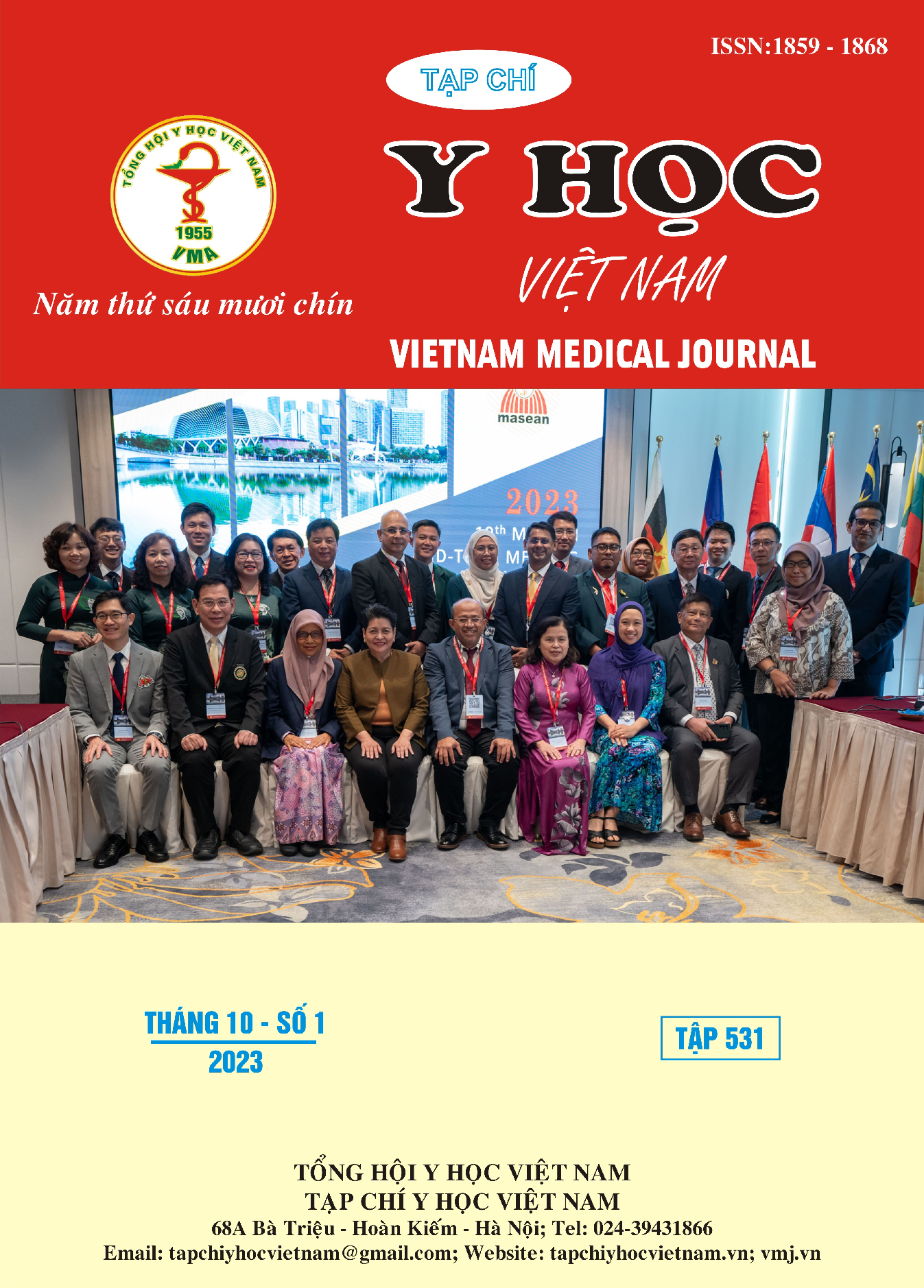PREOPERATIVE GLUE EMBOLIZATION AND SINGLE-STAGE EXCISION OF LOCALIZED HEAD AND NECK VENOUS MALFORMATIONS
Main Article Content
Abstract
Objective: The article aims to describe clinical, subclinical characteristics and results of treatment of localized head and neck venous malformations using preoperative glue embolization and excision. Methods: Our study was performed on 19 patients at Viet Duc hospital in the period of time between 2020 and 2023. The assessment was performed before operation, during operation and 6-month postoperation. Results: VMs contribute mainly at cheek (42,1%) and neck (26,3%) region, muscle layer was invaded in 74% of patients, 100% of VMs is well defined. There is no complication by glue embolization. 89,5% of cases had minimal blood loss during the operations. 100% of surgery had total resection of VMs without critical structures injury. The 6-month postoperative recurrent rate is 0%. Conclusion: Preoperative glue embolization following the single-stage excision is a safe and effective procedure for treatment of localized head and neck venous malformations.
Article Details
Keywords
Venous malformation, head and neck, glue embolization, surgery
References
2. Uller W. et al. “Preoperative Embolization of Venous Malformations Using n-Butyl Cyanoacrylate,” Vasc. Endovascular Surg., vol. 52, no. 4, pp. 269–274, May 2018, doi: 10.1177/ 1538574418762192.
3. Park H. et al. “Venous malformations of the head and neck: A retrospective review of 82 cases,” Arch. Plast. Surg., vol. 46, no. 1, pp. 23–33, Jan. 2019, doi: 10.5999/aps.2018.00458.
4. Polites S. F. et al., “Single-stage embolization with n-butyl cyanoacrylate and surgical resection of venous malformations,” Pediatr. Blood Cancer, vol. 67, no. 3, p. e28029, Mar. 2020, doi: 10.1002/pbc.28029.
5. Steiner F., FitzJohn T., and Tan S. T. “Surgical treatment for venous malformation,” J. Plast. Reconstr. Aesthetic Surg. JPRAS, vol. 66, no. 12, pp. 1741–1749, Dec. 2013, doi: 10.1016/ j.bjps.2013.07.033.
6. Bowman J., Johnson J., McKusick M., Gloviczki P., and Driscoll D. “Outcomes of sclerotherapy and embolization for arteriovenous and venous malformations,” Semin. Vasc. Surg., vol. 26, no. 1, pp. 48–54, Mar. 2013, doi: 10.1053/ j.semvascsurg.2013.04.001.
7. Ryu J. Y. et al, “Surgical approach for venous malformation in the head and neck,” Arch. Craniofacial Surg., vol. 20, no. 5, pp. 304–309, Oct. 2019, doi: 10.7181/acfs.2019.00416.
8. Nakamura M. et al. “Percutaneous sclerotherapy for venous malformations in the extremities: clinical outcomes and predictors of patient satisfaction,” SpringerPlus, vol. 3, p. 520, 2014, doi: 10.1186/2193-1801-3-520.
9. Chewning R. H. et al. “Combined glue embolization and excision for the treatment of venous malformations,” CVIR Endovasc., vol. 1, p. 22, Oct. 2018, doi: 10.1186/s42155-018-0028-y.
10. James C. A. et al. “Preoperative sclerotherapy of facial venous malformations: impact on surgical parameters and long-term follow-up,” J. Vasc. Interv. Radiol. JVIR, vol. 22, no. 7, pp. 953–960, Jul. 2011, doi: 10.1016/j.jvir.2011.03.004.


